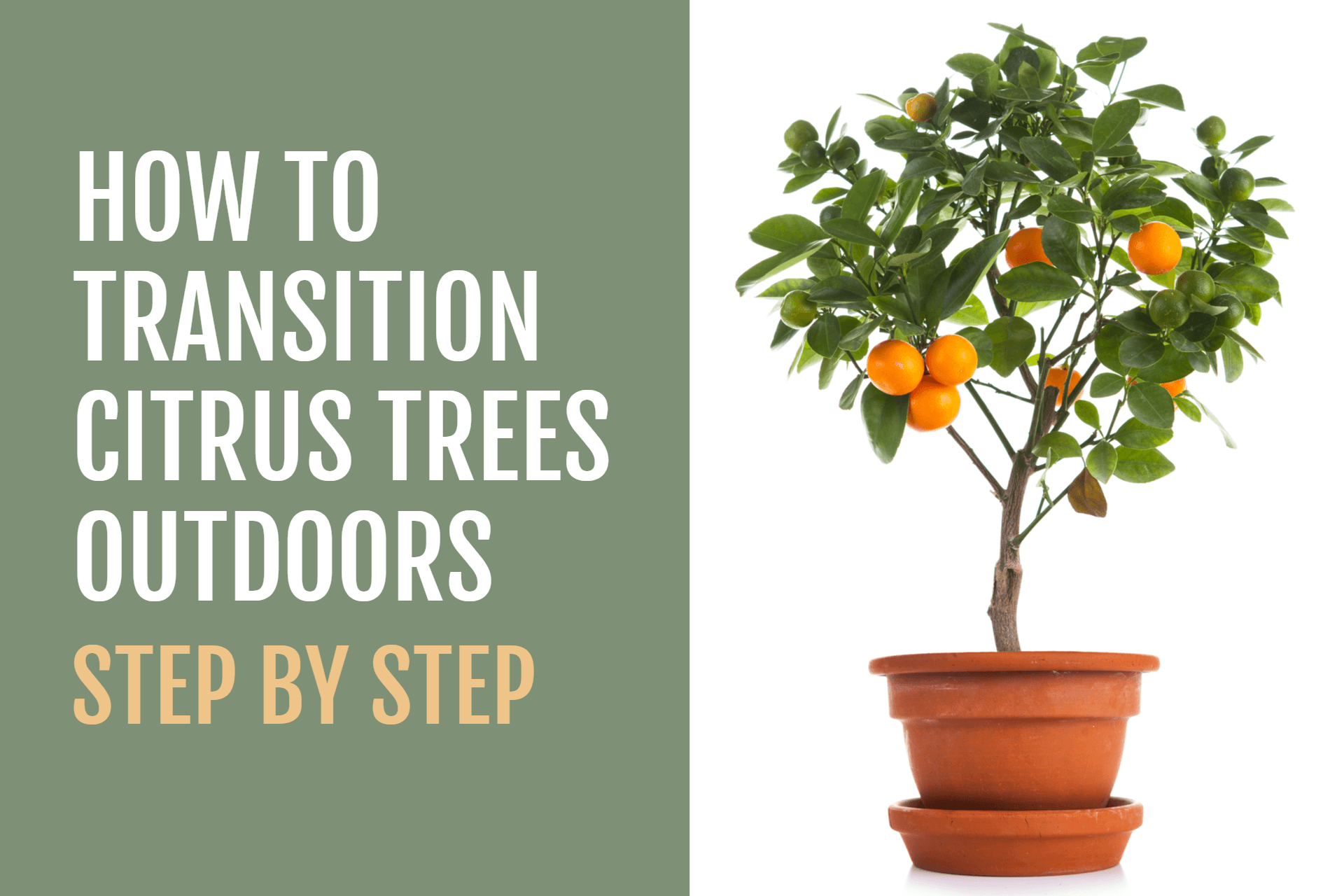
Citrus Trees
March 2021 3 minute read
You have been caring for your citrus trees indoors all winter and are wondering what the next steps are to move your tree outdoors for the season. Well look no further, this guide will show you step by step what you need to do to keep your tree alive and thriving.
Step 1:
Keep track of the temperature in your area. Most citrus trees can handle a light frost, but any temperature below 32°F can be detrimental to its health. Keep your tree inside until you are sure the last spring frost in your area has passed, and the average nightly temperature is above 40°F before preparing to move your citrus tree outside.
Step 2:
Now that it’s warm enough outside, it’s time to pick a place for your citrus tree. Since your tree has been inside all winter, it will shock the tree if you put it in direct sunlight for too long the first week. The ideal location for the first week outside is a spot by the house with indirect sunlight that gets an hour or two of direct light throughout the day. After the first week, you can move your adjusted tree into its final location, which ideally gets 8 hours of full sun daily. There is no need to constantly move your tree around or rotate the tree during this process. If you live in a particularly hot climate you will want to use Plant Guard paint/spray to protect your tree from sunburn.
Note: it is common for citrus trees to drop some of their leaves during this transition. Do not panic. Continue to monitor the temperature outside and don’t hesitate to bring the tree back inside if you see that temperatures are going below 40°F again.
Step 3:
Over the winter months, it is best to water citrus trees less, but now that we are moving them outside and they are starting to pick up the growing pace, we need to adjust our watering regiment accordingly. To know when to water your tree, check by digging your fingers 2-3 inches into the soil and feel for moisture. If the soil under the first 2-3 inches is still moist, the tree does not need water yet. Citrus trees don’t like to be over-watered, which means watering too often. Conversely, do not wait until the soil is completely dry before watering either. Check bi-weekly to ensure your citrus tree’s soil stays moist.
Step 4:
When growing in containers, fertilize your trees after the adjustment period and then again at regular intervals throughout the growing season to keep your tree happy and healthy. We recommend a couple of tablespoons of our 24-14-14 Romeo fertilizer diluted in water in the spring to promote growth and high phosphorus fertilizer in the fall to promote flowers and fruit set.
Step 5:
Enjoy your citrus tree outdoors all season and be sure to transition the tree back inside when nighttime temperatures begin to fall below 40°F regularly. Here is an Overwintering Citrus Guide when you're getting ready for winter.
Shop Citrus Trees
Check out Growing Citrus in Containers for more information
Author: Israel Osuna